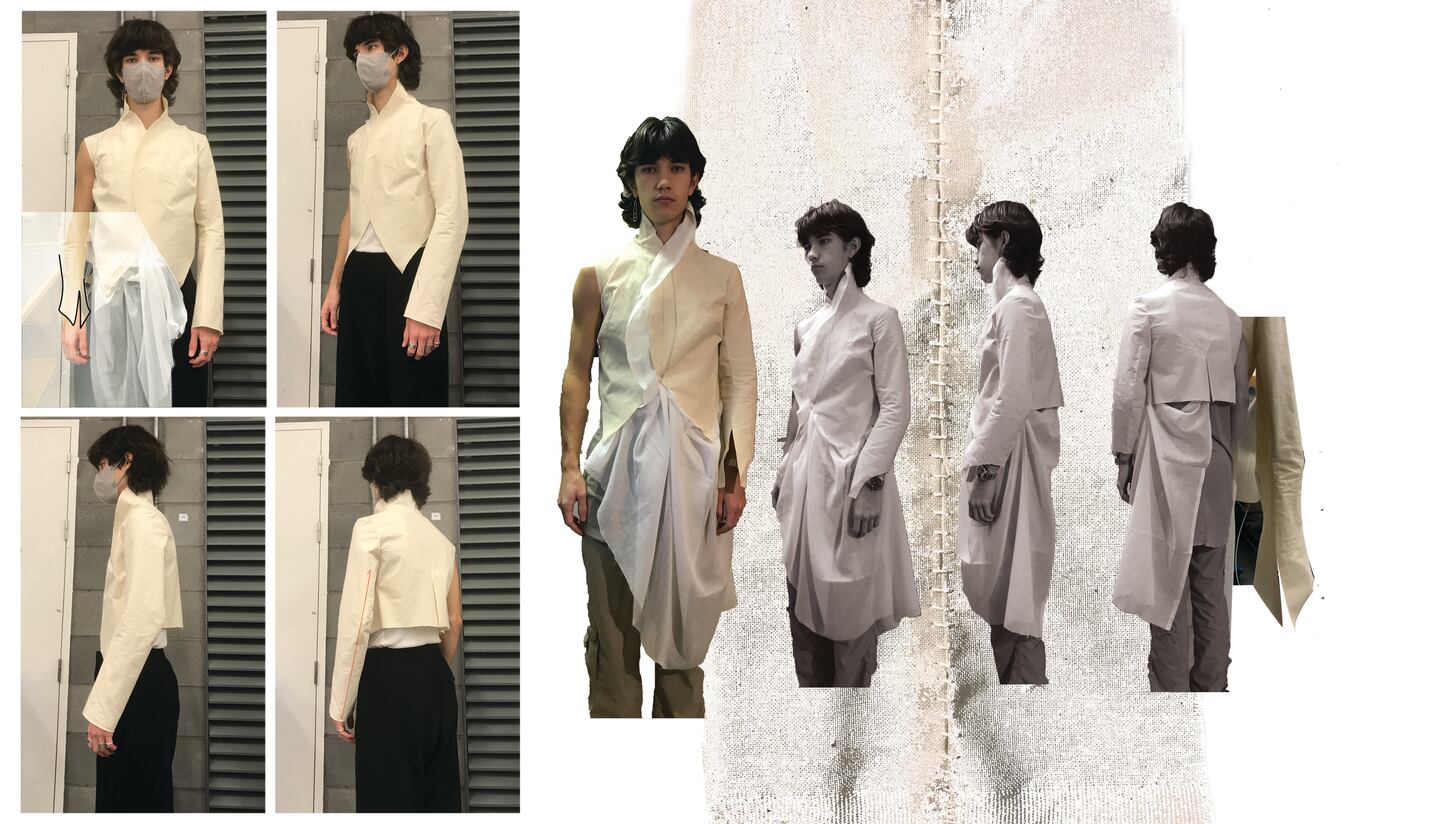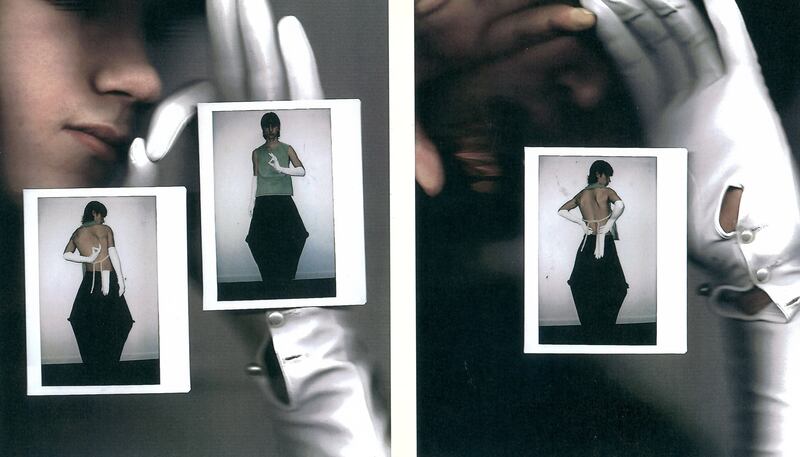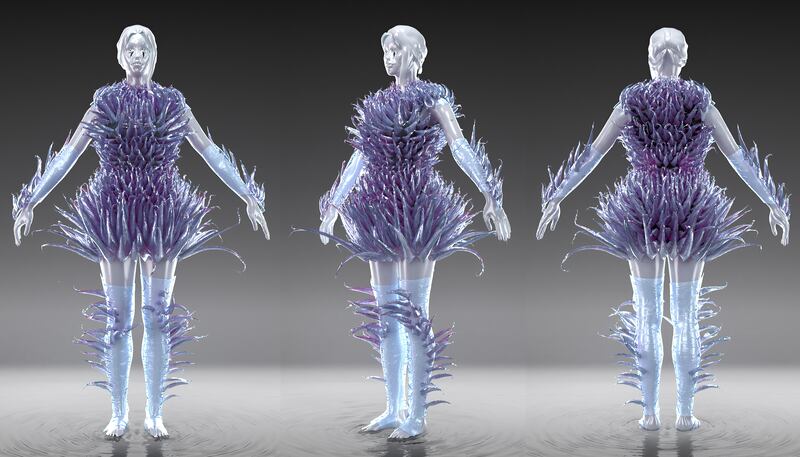
The Business of Fashion
Agenda-setting intelligence, analysis and advice for the global fashion community.

Agenda-setting intelligence, analysis and advice for the global fashion community.

Gavin Gega, a second-year menswear student at Central Saint Martins, had spent four weeks constructing an intricate tailored jacket when, in December 2020, physical teaching was once again suspended and lockdowns re-imposed across the UK.
For Gega and his classmates, the new social distancing measures meant finishing the assignment for a notoriously complex and sophisticated garment remotely from their student rooms without resources, studio space or hands-on support.
“It was the most overwhelming feeling,” said Gega. But it’s just one small example of the immense pressure the pandemic placed on fashion schools to rethink how they teach subjects that often require hands-on learning as well as regular sessions in spacious studios and access to expensive technical equipment.
The result has been a digital transformation at many schools that was unimaginable a year ago, but is now vital. As the pandemic grinds on, fashion’s academic institutions are undergoing permanent changes, not only to maintain support for students working remotely, but also to prepare them for an industry where digital tools and techniques are increasingly gaining ground.
ADVERTISEMENT
Before Covid-19, we were very much of the mindset ‘if it isn’t broken, don’t fix it’ in terms of fashion.
“Before Covid-19, we were very much of the mindset ‘if it isn’t broken, don’t fix it’ in terms of fashion. We didn’t have the incentive to do things different,” said Professor Jules Dagonet, head of school of fashion and textiles at University for the Creative Arts in Farnham, UK. “[This has been a] very steep learning curve... [but] we really do need to reinvent fashion education in the sense that technology cannot be an add-on. It needs to be something which is very much integral to fashion education.”
Digitising The Campus Experience
The transition to digital learning has been bumpy. Professors and lecturers on both sides of the Atlantic scrambled last March to figure out how to help students learn remotely. Office hours ballooned for many as one-on-one Zoom calls replaced time in the studio and distanced learning created new pressures and strains.
“I used to write a few emails here and there, but now [with virtual tutorials] I end up writing these quite big project briefs a week in advance that tell [students] all the equipment they’re going to need in their room,” said London College of Fashion creative director Rob Phillips. It’s a lot of additional work and ensuring access to equipment and facilities is one reason why many are anxious to get back to in-person learning.
But professors and lecturers said some simple tools schools had previously been slow to adopt have proved surprisingly effective.
“During the summer break last year I decided I’m just going to record myself creating garments so that students have a library of video content,” said Nicole Benefield, assistant professor of fashion design at Fashion Institute of Technology in New York. “And it worked out really well. [In one video] I recorded myself draping something [and] uploaded the videos of me speaking into the camera, incorporating images and text that said, step one, step two, step three.”

The video content is as relevant now as it was 12 months ago — and tutors across universities continue to add to the roster of step-by-step resources as and when questions from students emerge. The videos can be watched multiple times by those that need further clarification, something that can’t be done during in-person lectures, without additional work from faculty. It’s a format familiar to a generation of students who have grown up on social platforms like YouTube and is likely to endure and influence the way fashion is taught long beyond the current crisis.
Some academics now see a combination of physical and online lessons as a permanent feature of fashion education.
ADVERTISEMENT
“I can easily see blended, more digital-based learning happen where it’s applicable,” said LCF’s Phillips. “There’s going to be loads of stuff we take forward from this to make sure our curriculum becomes stronger for it.” For example, while in-person graduate shows will undoubtedly return, Phillips points to the value of having an online platform where all students across UAL can showcase their work (something LCF did not develop until the summer of 2020).
More schools are now experimenting with online-only courses. For instance, Parsons School of Design in New York introduced Parsons Entrepreneur Academy in January, offering a series of virtual business classes, mentoring and an online social platform that offers lectures and networking opportunities. Such courses allow schools to target a wider audience with a more accessibly priced option, but can still prove lucrative. Parsons Entrepreneur Academy’s director of digital learning, Christina Long, estimates that universities that offer comprehensive and engaging digital courses can serve several hundred paying students per session while complementing in-person teaching.
“Digital learning isn’t this thing that is out-shining or overpowering other types of teaching methods,” said Long. “It’s just another tool in the toolbox.”
Catering to the Rise of Virtual Fashion
Schools are also responding to the pandemic’s influence on the wider industry, seeking to adapt their offering to cater to fashion’s accelerated shift online and sudden adoption of virtual tools that were previously only slowly gaining traction.
Virtual fashion shows are now commonplace. Balenciaga’s Autumn/Winter 2021 collection was presented using virtual reality, while London-based designer Martine Rose showcased her Spring 2021 collection via an interactive video game. Meanwhile, virtual fashion is gaining ground as skins that are bought and sold through video games like Animal Crossing, and amid a boom in unique, blockchain-authenticated digital assets — named non-fungible token (NFTs) — that have seen digital-only items sell for millions of dollars.

“These institutions are recognising that we’re doing something new and exciting,” said Paula Sello, who together with Alissa Aulbekova co-founded virtual fashion brand Auroboros. The label is part of the Sarabande Foundation talent incubator set up by Alexander McQueen and has worked with fashion schools like Royal College of Art and Central Saint Martins to provide workshops on virtual garment design.
“We’re creating a digital show space, creating digital materials and just elevating the whole [virtual fashion] experience. That’s important for fashion schools which are under so much pressure to bring something new to the game,” Sello said.
ADVERTISEMENT
It’s a significant shift for fashion’s big academic institutions. Like the rest of the industry, they were largely slow to embrace new digital tools and technologies before the pandemic. But the the last year has dramatically changed the landscape.
“In the earlier stages [of the pandemic], we may have underestimated the value of virtual design,” said Peter Leferink, head of fashion and design at Amsterdam Fashion Institute. “But now it’s quite clear to us that we need to offer [lessons in] these programmes that allow students to create garments in purely virtual environments.”
Many schools offer courses in virtual design, but some are launching new programming to cater to these changes. University for the Creative Arts, for example, said it is the first to launch a Masters solely focused on all aspects of digital fashion — from virtual design and try-ons to digital samples — that will be available to students this September both online and on-campus (a long-term university goal catalysed by the pandemic).
“We want to produce graduates who can drive change within the fashion industry,” said University for the Creative Arts’ Dagonet. “That’s how this idea of the MA in digital fashion came up, because we could see that there was a digitisation of the production process, that e-commerce was becoming increasingly important, and that virtual fashion was becoming more prominent in games and on social media.”
Related Articles:
Is Fashion School Still Worth the Money?
To provide actionable insights and inspiration on how fashion and retail industries can further embed diversity, equity and inclusion in the workplace and business strategies today, BoF Careers co-hosted a panel discussion with The Outsiders Perspective. Now, BoF shares key learnings from the panel.
Discover the most exciting career opportunities now available on BoF Careers — including jobs from Tapestry, Alexander McQueen and Toteme.
A US regulator has banned most uses of the clauses, which started as a way for fashion companies to prevent senior executives from walking off with trade secrets, but have become a standard retention tool.
Check out this week’s new partners and openings on BoF Careers, the global marketplace for fashion talent.